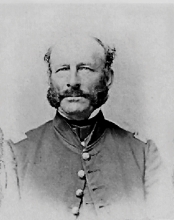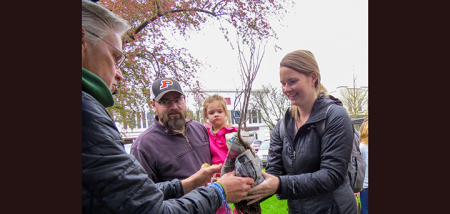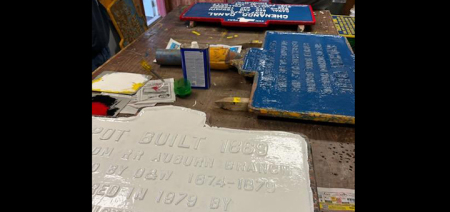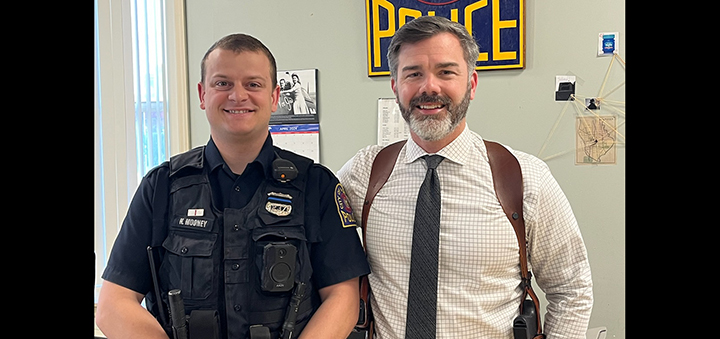Chenango In The Civil War: Father And Son ... One A Soldier, One A Sailor
Published:
November 27th, 2012

Editor’s Note: In conjunction with the Chenango County Civil War Commemoration Project Team, The Evening Sun will present a monthly series chronicling items of local interest during the war between the states, compiled and written by a number of local history enthusiasts.
By Nancy Bromley and Peg Marr
Greene Historical Society
Captain Nicholas Dederer, Company E 114th Regiment, NY Volunteers was born in the city of New York, July 31, 1807, the son of Joseph and Susan (Anthony) Dederer. On May 27, 1830 he married Eliza Ann Townsend in Orange County, NY. The couple had four daughters and one son, Samuel T. Nicholas was a farmer, and served for some time as Justice of the Peace, and also as vice-president of the Orange County Agricultural Society. In 1844 the family removed to Greene, NY.
Nicholas entered the Civil War on August 13, 1862. He had been extremely successful in raising recruits for Company E of the 114th and thus was commissioned First Lieutenant of the company. Because of his years of experience and age of 54 years, he was dubbed “Father of the Regiment.”
During the first Teche campaign in Louisiana the Captain was unable to accompany the regiment due to disease. Under the direction of the surgeon he was left in Brashear City, in charge of the convalescent camp. Later he joined the regiment at Port Hudson but he was obliged to return to the hospital in New Orleans with a severe attack of jaundice. For some time he was assigned as Provost Marshall of St. John’s, St. Mary’s, and St. Charles parishes in Louisiana. He was compelled to resign because of excessive fatigue and exposure. Tearfully he bid his company good bye- on April 5th, 1864. In Elias Pellet’s book History of the 114th Regiment, it was stated as follows: “There was hardly an officer or man but regretted his departure, as he was known for his sterling worth and unquestioned ability in matters of importance.”
Nicholas returned home to Greene and in February of 1866 he applied for a patent for his invention on improving harvesting machines. He was also connected with the post office for many years, and was appointed superintendent of section No. 2 of the Chenango Canal. Nicholas had a great interest in veterans of the Civil War, and was a prominent member of the Grand Army of the Republic. His name is the first name entered in the book for the Otis G. Banks, Post No. 137 of the GAR in Greene.
Nicholas died at his home in Greene on September 27, 1885, at the age of 77. He was survived by his wife and two daughters. Services were conducted by Rev. James A. Taunt of the Episcopal Church. The following members of the 114th Regiment served as pall bearers: Brevet- Brigadier General, Samuel R. Per Lee, Majors Oscar H. Curtis and Dyer D. Bullock, Dr. Harris H. Beecher, surgeon, Captain Uriah Rorapaugh, and Private Chauncey Simmons. Captain Dederer was interred in Sylvan Lawn Cemetery, Greene, NY.
Samuel Townsend Dederer, the Sailor
Samuel T. Dederer was born December 12, 1837, in Orange County, New York. He was the middle child and only son of Nicholas and Eliza Dederer, having two older sisters, Mary and Eliza, and two younger sisters, Susan and Josephine. Samuel was about 10 years old when he moved to Greene with his family.
Samuel answered the call of the sea as a young man in his 20s. He was apprenticed as a sailor on clipper ships that traveled between New York and Liverpool, England, and then became employed by the Pacific Mail Steam Ship Company as quartermaster, traveling between San Francisco and Panama until he entered the Union Navy on June 29, 1864, and was assigned to USS Thistle as acting ensign on July 23, 1864. Thistle was being converted to a gunboat, having formerly been a Confederate ship captured during blockade running. His next assignment was aboard the Tristram Shandy, which sailed to Beaufort, NC, to become part of a blockade squadron commanded by Rear Admiral S. P. Lee.
He was then transferred to Yantic, a wooden-hulled gunboat commanded by Lieutenant Commander Thomas C. Harris. For a time the ship operated off the eastern seaboard between Hampton Roads and Halifax, NS, in search of the Confederate pirate ship Olustee. Yantic later joined the blockading squadron off Wilmington, NC, and suffered casualties when her 100-pound gun burst, killing six men in the first attack on Ft. Fisher on Christmas Eve, 1864. The first attack failed, but a second attack was launched on January 13, 1865. Ensign Dederer was among the men detailed to make a land attack on the fort while the fleet attacked in the front and the army attacked the rear. He distinguished himself for great gallantry and courage while under murderous fire from the enemy. Fort Fisher was taken on January 15, 1865.
Ensign Dederer also participated in the capture of Fort Anderson, NC, between February 17 and 19. He was admitted to sick bay on May 3, 1865, with Febris Remittens (remittent fever, aka malaria) and did not return to duty until May 14. This was the start of the illness that was later to claim his life after the war.
Samuel remained in the US Navy until January 12, 1866, after which he returned to his former employment with Pacific Mail Steam Ship Company, where he served as 2nd officer aboard the steamer Alaska, which traveled between New York and Panama.
Samuel married 22-year-old Jennie S. Collyer from Mendham, Morris County, New Jersey, on September 5, 1872, in San Francisco. They had no children. In December of 1872, Samuel was 1st officer aboard the Sacramento when it went aground on a reef off Baja California. He was later cited for his courage and heroic efforts in saving the passengers on this ill-fated voyage.
In 1874 while aboard the Alaska, which was moored in China, the ship was hit by a typhoon that tore the ship from its moorings. The officers saved the ship and later brought it to San Francisco with a full cargo. The exposure to the elements during the storm exacerbated his malaria, and he was forced to seek lighter duties. His final months of service were as commander of the Moses Taylor off Acapulco, Mexico. His disease had worsened and in 1876 he asked for a leave of absence to return to New York. He arrived in Greene with Jennie in June of 1876, and appeared to be recovering, but succumbed to disease on June 26, 1876, surrounded by his wife, parents, and sisters in his childhood home. He was 38 years old. His cause of death was listed as “disease of the lungs.” Samuel is buried in the Dederer family plot in Sylvan Lawn Cemetery in Greene.
Jennie Dederer returned to the West Coast and remarried in 1884. She later sought to collect Samuel’s Civil War pension, claiming that his illness was contracted during his time in the Union Navy. Despite an affidavit from a ship’s surgeon who had served with Samuel in the war, and who had treated him for malarial outbreaks and severe cough while aboard the Alaska, and other affidavits attesting to his robust health before he entered the navy, the pension requests were denied. Jennie Dederer Collins died in 1913 at age 63.
The following is quoted from Samuel Dederer’s obituary, published June 29, 1976, in the Chenango American, Greene:
Capt. Dederer was a thorough gentleman, a whole-souled, noble young man, and won for himself golden opinions and the friendship of all in whatever quarter of the earth he traveled. But his last earthly voyage is ended, and may we not hope that his spirit is now at rest in that bright and beautiful harbor – over the river.
Comments







